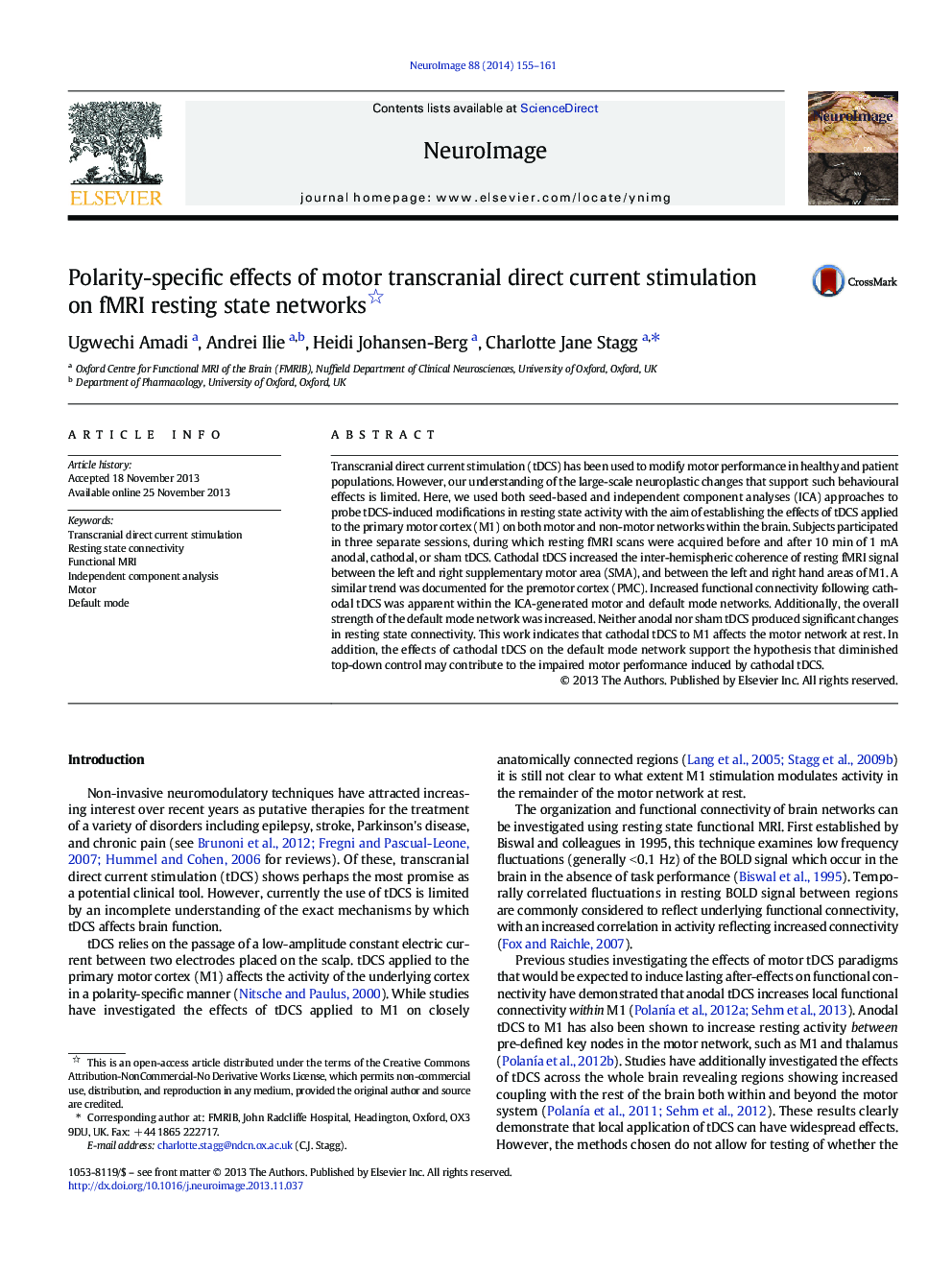| Article ID | Journal | Published Year | Pages | File Type |
|---|---|---|---|---|
| 6027684 | NeuroImage | 2014 | 7 Pages |
Abstract
Transcranial direct current stimulation (tDCS) has been used to modify motor performance in healthy and patient populations. However, our understanding of the large-scale neuroplastic changes that support such behavioural effects is limited. Here, we used both seed-based and independent component analyses (ICA) approaches to probe tDCS-induced modifications in resting state activity with the aim of establishing the effects of tDCS applied to the primary motor cortex (M1) on both motor and non-motor networks within the brain. Subjects participated in three separate sessions, during which resting fMRI scans were acquired before and after 10Â min of 1Â mA anodal, cathodal, or sham tDCS. Cathodal tDCS increased the inter-hemispheric coherence of resting fMRI signal between the left and right supplementary motor area (SMA), and between the left and right hand areas of M1. A similar trend was documented for the premotor cortex (PMC). Increased functional connectivity following cathodal tDCS was apparent within the ICA-generated motor and default mode networks. Additionally, the overall strength of the default mode network was increased. Neither anodal nor sham tDCS produced significant changes in resting state connectivity. This work indicates that cathodal tDCS to M1 affects the motor network at rest. In addition, the effects of cathodal tDCS on the default mode network support the hypothesis that diminished top-down control may contribute to the impaired motor performance induced by cathodal tDCS.
Keywords
Related Topics
Life Sciences
Neuroscience
Cognitive Neuroscience
Authors
Ugwechi Amadi, Andrei Ilie, Heidi Johansen-Berg, Charlotte Jane Stagg,
